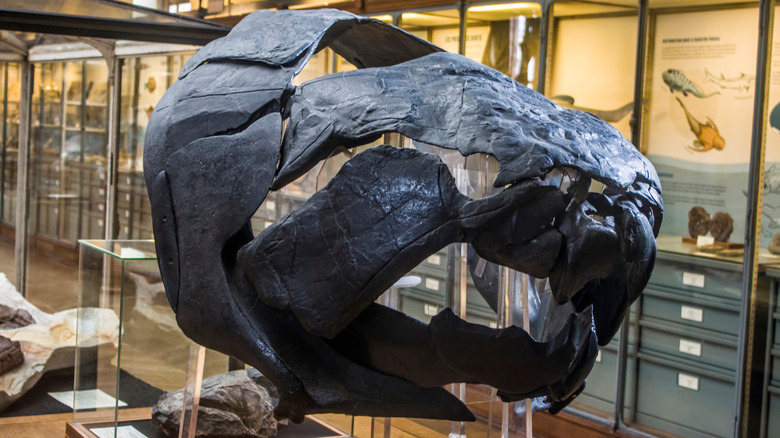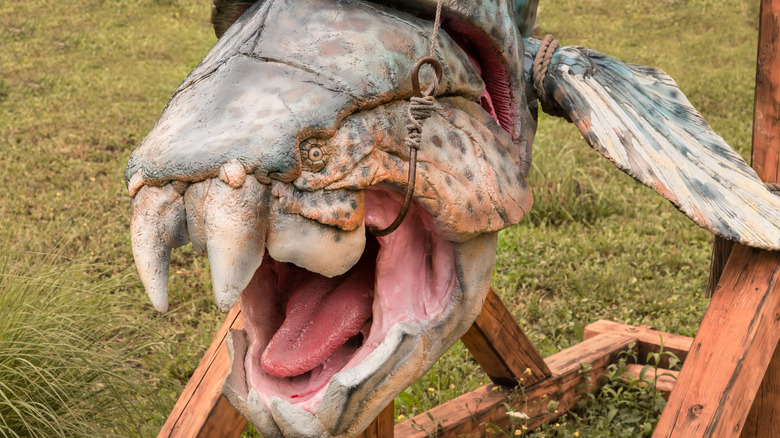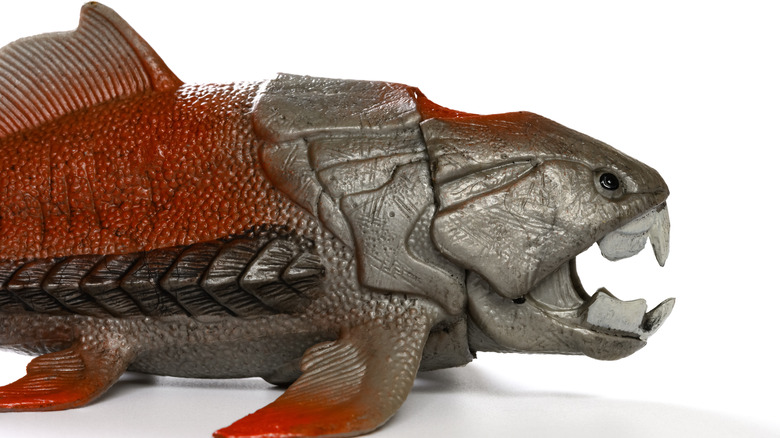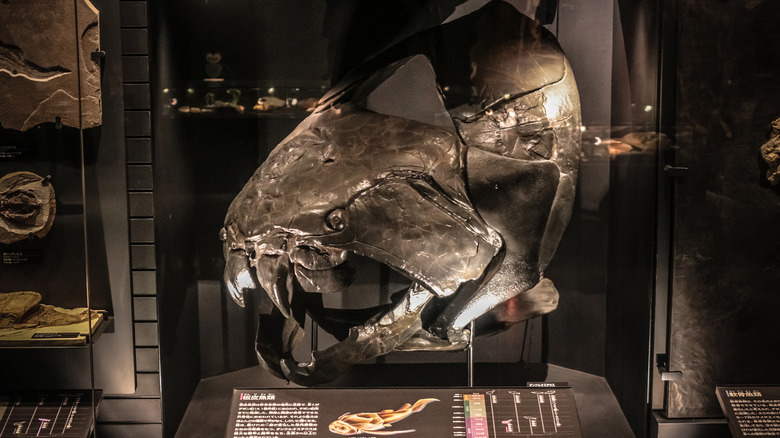Dunkleosteus: The Scary Truth About This Gigantic Extinct Fish
There are many vicious animals that could pose a serious threat to humans in modern times. These include great white sharks and piranhas, both of which have been the subject of several movies due to their reputation as underwater predators. Even if the makers of those films took a great deal of creative liberty in making said sharks and piranhas look more terrifying to viewers, such animals can and will attack humans in some (but not all) situations, especially if they feel confused, curious, or threatened.
That all said, we can consider ourselves very lucky not to have existed alongside a number of extinct creatures that lived millions of years ago. The predators of the animal kingdom in those prehistoric times were oftentimes much more menacing than the ones that exist today, and the giant fish known as Dunkleosteus was no exception. During the late Devonian period, which took place 360 million to 380 million years ago (via Fossil Guy), Dunkleosteus ruled over the world's oceans, and it was only the period's mass extinction event that finally ended its reign of terror. Here's what we know about this long-extinct fish and what made it possibly the scariest creature of its time.
What's in a name?
Before we talk about how fearsome Dunkleosteus was, we first need to know where it got its scientific name. According to the Cleveland Museum of Natural History (CMNH), Dunkleosteus was named in honor of Dr. David Dunkle, the establishment's former curator of vertebrate paleontology, as well as "osteus," the Greek word for "bone." This, per Fossil Guy, is because the fish's head and jaws were made up of giant bone plates that served as "tank-like" protective armor and made it even more fearsome in its appearance. Its remains were first found in 1867 by amateur paleontologist Jay Terrell and his son, who spotted the fossil in Sheffield Lake, Ohio, along the Lake Erie cliffs. Specimens of the creature have turned up elsewhere in Ohio, though it is believed to have existed in most other parts of the world.
Given that the word "dinosaur" is derived from the Greek words for "terrible lizard," Terrell was seemingly inspired by the far more famous prehistoric creatures, initially dubbing his find as "terrible fish" — accurate, but perhaps not the most creative choice. Decades later, it was decided that the animal should be named after Dunkle instead, though Terrell was eventually honored when the largest species was given the name Dunkeosteus terrelli.
Dunkleosteus was a large, terrifying creature despite its lack of teeth
Estimates of Dunkleosteus' size tend to vary — per Reuters, scientists from the Field Museum and the University of Chicago described the fish as measuring around 33 feet in length and weighing in at four tons. The Cleveland Museum of Natural History gives a more modest approximation of the creature's size, noting that it likely was about 20 feet long and weighed one ton. No matter how you look at it, Dunkleosteus was one massive fish, and if it was around today, it would certainly be the subject of many a killer animal film. Jaws truly has nothing on old "Dunk," and would probably swim away in fear at the sight of its prehistoric counterpart.
Just how scary was Dunkleosteus? According to Fossil Guy, the fish was similar to other placoderms in the sense that it didn't have any teeth. However, the aforementioned blade-like, armored jaw plates more than made up for that, as its bite normally packed anywhere around 11,000 to 21,000 pounds per square inch of force. (Again, the estimates vary.) There was also a small area at the tip of the plates that carried a maximum force of 80,000 pounds per square inch. As Field Museum curator of fishes Mark Westneat pointed out, those figures put Dunkleosteus well ahead of even a "huge" great white shark in terms of bite force.
Additionally, the jaw plates happened to be self-sharpening — yet another reason why Dunkleosteus could eat just about anything. Research suggests that may have included its own kind.
Was Dunkleosteus a cannibal?
According to bite analysis done on three specimens at the CMNH, there was "major damage" found on the animals' bone plates that was likely the result of an attack from another Dunkleosteus. There was some evidence of healing on some of the wounds, but in other cases, the attacks proved to be life-threatening. "The head shield is the thickest part of Dunkleosteus' skull and this bite was strong enough to fold it like a taco," explained CMNH researcher Lee Hall. "That is a hugely traumatic injury and there's no getting better from it.
Why would Dunkleosteus eat its own kind, or at least try its best to do so? The museum compared this phenomenon to the interspecies aggression we see so often in modern animals, where two alphas may feud with each other over mating rights or feeding territory. However, Hall clarified that cannibalism may be the most plausible explanation due to the seriousness of the damage found in the Dunkleosteus specimens, where there were bone fragments chewed up and removed. "That means there were no environmental forces damaging the bone postmortem," he continued. "Clearly, something was biting on this and doing a good job of taking out chunks. When you try to explain what could cause that kind of damage, you put two and two together."



